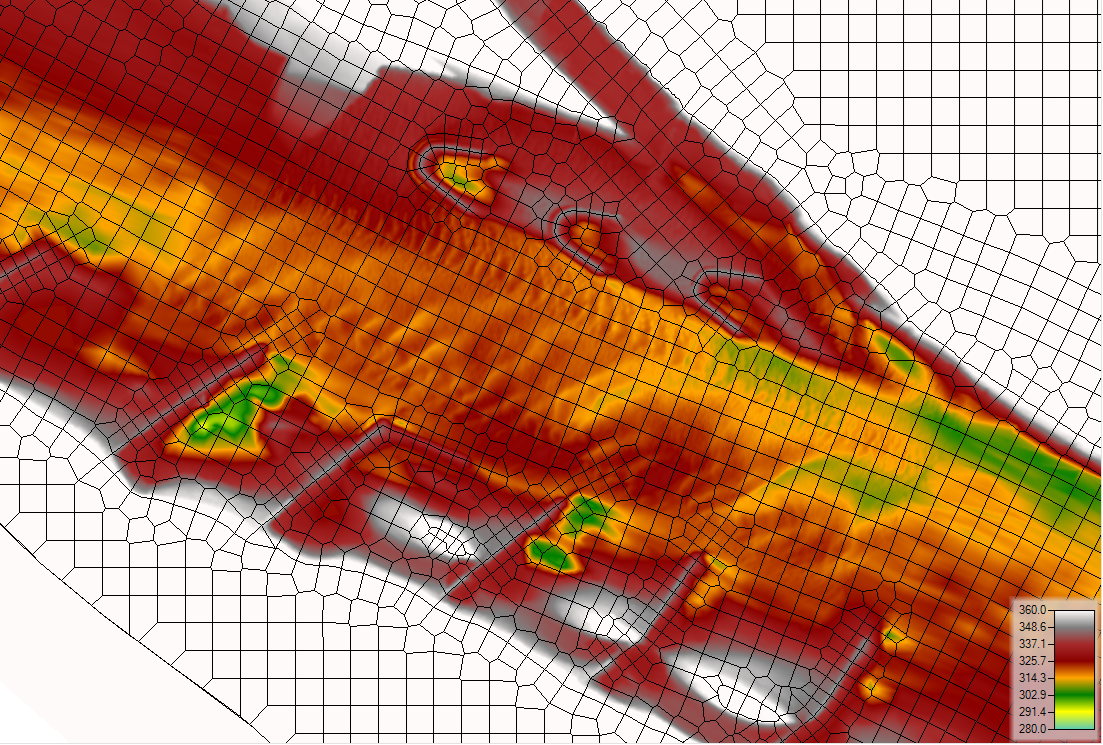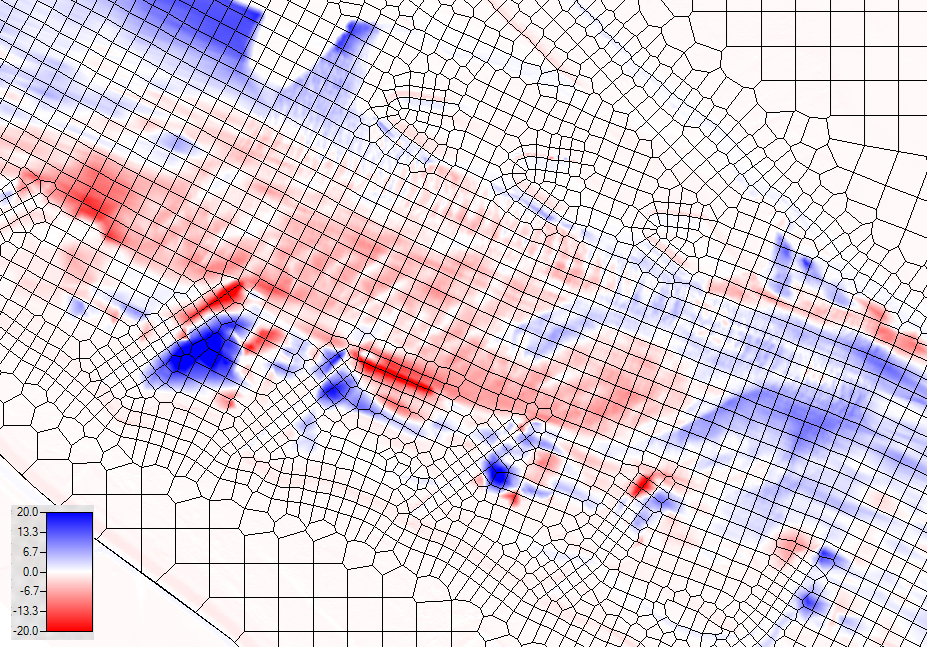Download PDF
Download page HEC-RAS Version 6.1 New Feature, 2D Sediment Transport Modeling.
HEC-RAS Version 6.1 New Feature, 2D Sediment Transport Modeling
By Alex Sánchez, PhD, and Stanford Gibson, PhD
After several years of development, the Hydrologic Engineering Center (HEC) released a new two-dimensional (2D) sediment transport option in HEC's River Analysis System (HEC-RAS) software. The feature was beta released in Version 6.0 and officially released in Version 6.1. HEC-RAS now allows users to add sediment data to new or existing 2D hydraulic models and the software will simulate sediment flux and bed change. Figure 1 illustrates these capabilities, including the terrain and results for a 2D, HEC-RAS sediment model of a section of the upper Mississippi River. HEC has tested the model against many verification and validation tests.


HEC emphasized model robustness, and computational speed during development, while still providing a extensive suite of capabilities and features. The 2D sediment capabilities are also highly modular and flexible and consistent with the one-dimensional (1D) sediment features. HEC's Hydrologic Modeling System (HEC-HMS) is also incorporating the same 2D surface water and sediment transport code to make it consistent with HEC-RAS. HEC-RAS 2D sediment transport utilizes a novel sediment subgrid approach which is integrated with the hydraulic subgrid approach in HEC-RAS, 2D, surface-water hydrodynamics. The sediment subgrid approach incorporates terrain and bed gradation information from the detailed terrain data within each grid cell into the computations, which improves the model accuracy when the computational grid cells are larger than terrain resolution. This feature allows the model to use relatively coarse computational grids while reducing computational times and maintaining an accurate solution, which improves run times. The 2D sediment model solves for total-load sediment transport with a high-resolution finite-volume advection-diffusion solver and algorithms that support a wide range of morphological processes.
Key model features include:
- Multiple grain class sediment transport
- Variable particle density
- Variable bed density (dynamic porosity)
- Consolidation
- Flocculation
- Hiding and exposure corrections
- Bed slope corrections
- Eight transport potential formulas
- Various erosion and deposition formulations
- Subgrid bed change, sorting, and layering model
- Sheet and splash erosion
- Non-erodible surfaces
- Partial wetting and drying
- Bounded high-order advection schemes
- Implicit second-order time integration
HEC-RAS also updates properties of the 2D mesh at subgrid scales based on simulated morphological change. The 2D morphodynamic subgrid modeling approach is similar to that used by HEC-RAS in 1D simulations, but resolves many 2D specific processes including wetting and drying, bed roughness, erosion, deposition, bed composition and layering, at a subgrid level. Users can divide the bed into any number of vertical layers and HEC-RAS will compute bed sorting, layering, and stratigraphy across the 2D domain.
The subgrid approach in the 2D morphodynamic model is different from existing models in that it does not utilize a high-resolution grid; the sediment computations are applied directly to subgrid property tables. The HEC-RAS 2D sediment approach utilizes both high-resolution and low-resolution property tables to simulate hydrodynamics and morphodynamics, respectively. Currently, the 2D sediment model input has been integrated with the current interface. Output for 2D sediment transport includes cell- and face-averaged quantities like total and fractional sediment concentrations and bed gradation and bed change. Future versions of the HEC-RAS interface will also be able to plot subgrid variables such as the subgrid bed gradation and bed change.
Online user documentation and tutorial videos are available for these new tools.